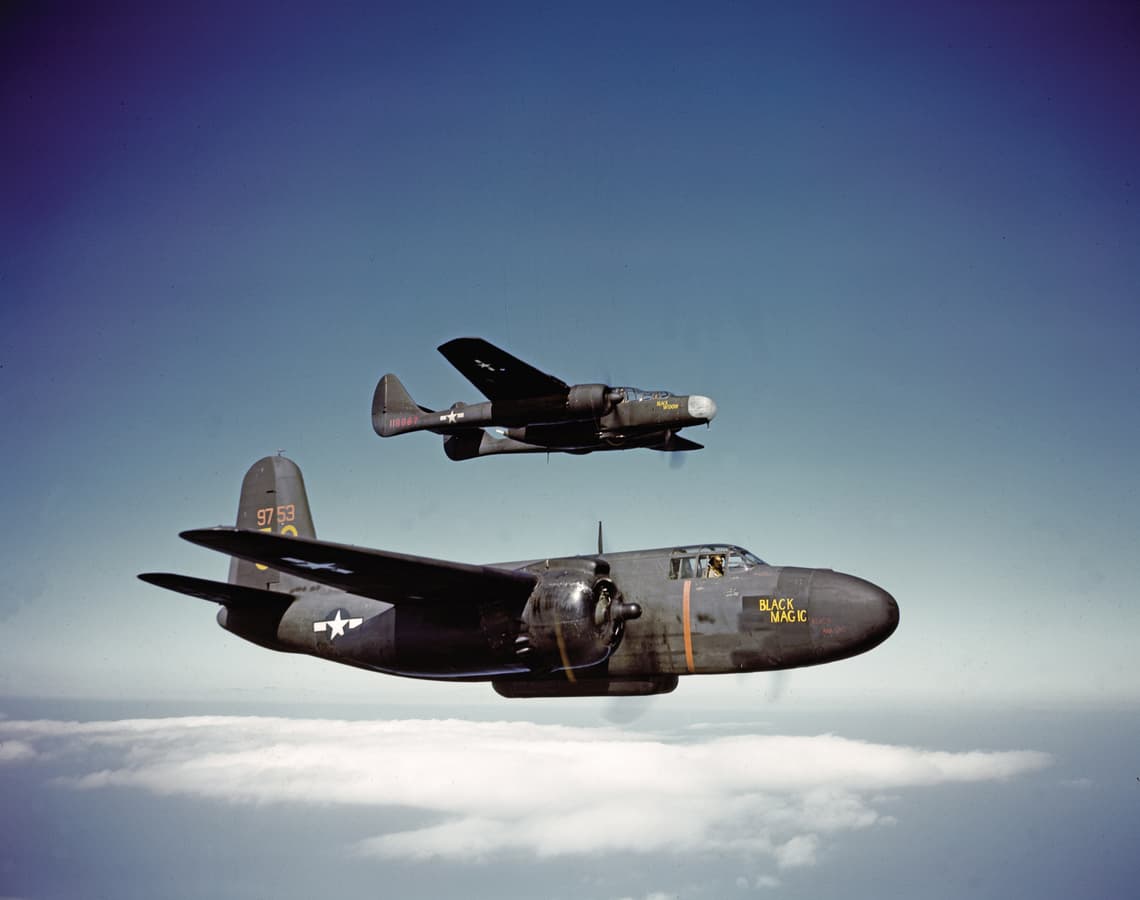History
The Douglas A-20 Havoc and its export derivatives were among the most important and effective light bombers of World War II. A total of 7,478 aircraft were built by Douglas and its licensed manufacturers. In US service, the aircraft was designated the A-20, while in British service it was known as the Boston or Havoc, with Roman numeral designations.
One notable British adaptation of the Havoc was its conversion into a night fighter. Equipped with the AI Mark IV radar, the first practical airborne intercept radar, the RAF’s modified Havocs proved effective in the night intruder role. The first of these conversions entered operational service in April 1941. US Army Air Corps officials closely observed these developments, studying the application of radar-equipped aircraft in countering night raids.
As the US moved closer to entering the war, the Air Corps realized the need for an interim night fighter while waiting for the more capable Northrop P-61 Black Widow to become available. As a stopgap, the Air Corps ordered Douglas to convert 60 A-20 airframes into radar-equipped night fighters, designated P-70. The first conversion, the XP-70, served as a proof of concept and led to the formal decision in October 1940 to proceed with 59 additional conversions.
These early P-70s were powered by Wright R-2600-11 engines, the same used on the A-20A. Those were, however, not supercharged. Although the more powerful, turbo-supercharged R-2600-7 engines had initially been considered, they had already proven troublesome on earlier Havoc models. The oversight of high-altitude capability would prove to be a limiting factor for the P-70’s effectiveness in combat.
The P-70’s radar was the SCR-540, a US-licensed version of the British AI Mk. IV system. Housed in an unglazed nose with a prominent arrowhead-shaped antenna array, the system operated on a 1.5-meter wavelength and suffered from significant ground clutter at low altitudes. Dipole receiving antennas were mounted on each side of the nose, with additional antennae fitted to the left wing.
The P-70s were coated in matte black night camouflage with standard Air Corps markings, and their serial numbers were colored red. Internally, the aircraft underwent several major changes: the bombardier’s position and nose armament were removed, and the rear gunner’s position was converted into a radar operator’s station, eliminating the defensive guns and reducing crew from three to two. A 250-gallon fuel tank was installed in the bomb bay, which also housed a tray-mounted armament of four 20 mm cannons with 120 rounds each.
The 59 production P-70s were delivered between April and September 1942 and were nicknamed Nighthawk. Roughly thirty of these were delivered in July 1942 to Orlando, Florida, where they were used by the 481st Night Fighter Operational Training Group to train new crews and develop radar-intercept tactics. In all, the P-70 had been used to train 19 night fighter squadrons.
Five squadrons deployed overseas with P-70s, but few used them operationally. Four squadrons sent to North Africa in 1943 as part of the Twelfth Air Force turned in their P-70s in favor of Bristol Beaufighter VIFs acquired through Reverse Lend-Lease from the RAF. The 427th Night Fighter Squadron deployed to Italy with its P-70s but replaced them with P-61 Black Widows before entering combat.
The P-70 saw limited front-line service in the Pacific Theater. The 6th Night Fighter Squadron began operations with the type in Hawaii in September 1942 and deployed detachments to Guadalcanal in February 1943 in response to increased Japanese night raids. The 419th Night Fighter Squadron soon reinforced them, and the 418th and 421st Squadrons deployed P-70s in New Guinea for night missions as well.
Combat experience revealed that the P-70 was too slow and lacked sufficient climb performance to effectively intercept enemy bombers. In the field, crews attempted to improve performance by removing armor and rear guns, fitting B-17 paddle-bladed propellers, and installing P-38 fuel booster pumps. These modifications yielded only marginal gains. As a result, converted P-38s were used for high-altitude interception, while the P-70s were relegated to low-level or intruder missions.
By the end of the war, the P-70 had only two confirmed aerial victories. As soon as the purpose-built P-61 became available in quantity, the P-70 was retired from front-line service.







